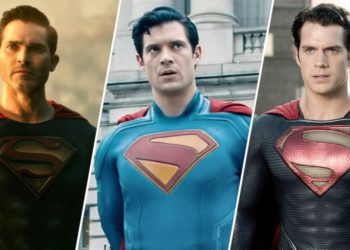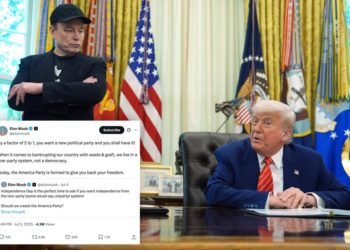David Corenswet Shares ‘Superman’ Advice He Got From Henry Cavill & Tyler Hoechlin
As David Corenswet takes over the big red cape for James Gunn‘s Superman, he had some support from previous Men...
Musk Makes His Long-Threatened ‘America Party’ Official
“Today, the America Party is formed to give you back your freedom,” Elon Musk wrote on the platform formerly known...
Saints star Alvin Kamara asks for do-over after terrible first pitch before Cubs-Cardinals game
NEWYou can now listen to Fox News articles! New Orleans Saints star running back Alvin Kamara will not be making...
Jason Kelce posts ‘cheers’ to America on July 4th — and is immediately sacked by Trump-hating lefties
Retired NFL great Jason Kelce ignited fireworks on social media while wishing everyone a Happy Fourth of July. “Man I...
Real Madrid beats Dortmund 3-2 after 3 stoppage-time goals, plays PSG in Club World Cup semifinals
EAST RUTHERFORD, N.J. (AP) — Kylian Mbappé’s spectacular bicycle kick was among three goals in second-half stoppage time, and Real...
Bobby Jenks, 2-time All-Star closer and World Series champion with the Chicago White Sox, dies at 44
CHICAGO (AP) — Bobby Jenks, a two-time All-Star closer and World Series champion with the , has died, the team...
Marcelo Balboa: Los jugadores de EEUU deben entender lo importante que es tener un gran Mundial en 2026
Marcelo Balboa sabe muy bien lo que significa representar a Estados Unidos en una Copa del Mundo. Exseleccionado nacional y...
Jurupa Valley man arrested for gross vehicular manslaughter, DUI after fatal crash
A Jurupa Valley man was arrested for gross vehicular manslaughter while intoxicated after a two-vehicle crash left at least two...
How to Watch Los Angeles Sparks vs Indiana Fever: Live Stream WNBA, TV Channel
The Indiana Fever (9-8) play host to the Los Angeles Sparks (5-13) on Saturday night. Indiana comes in on a...
How to Watch Grizzlies vs. Thunder: Live Stream NBA Summer League Salt Lake City, TV Channel
The Memphis Grizzlies take on the Oklahoma City Thunder on Saturday in NBA Summer League action out of Salt Lake...

















